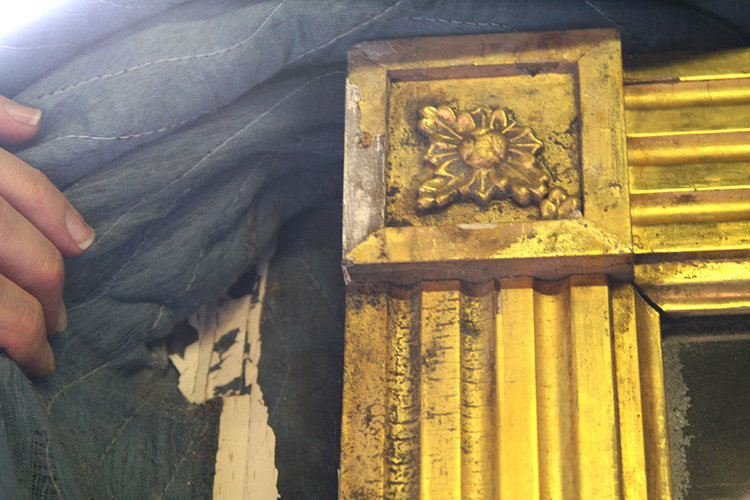When valuable possessions move outside your home, they usually require protection. While thorough wrapping should be sufficient for most antique objects (see below for crating requirement), keep these rules of thumb in mind:
Avoid moving pads: Cloth moving pads should never be used on older pieces unless you are absolutely positive of no loose or lifting structural pieces or finishes. A cloth pad put upon loose or lifting veneer, gesso, and finishes can catch on edges…tearing crucial areas from your piece. Other pieces, such as raised or carved decorations, sculptures, mirrors and frames cannot withstand the weight and pressure of moving pads, causing cracking, loosening, and breakage.
Multitask with shrink wrap: Choose shrink wrap for finishes instead of adhesive tape. While shrink wrap sticks only to itself, keeping pieces safe if packing slips, adhesive tape can tear entire sections of finish (particularly problematic on gilded objects). Shrink wrap has added benefit of the ability to be layered at corners and edges for extra protection. It also secures intentionally loose elements – like doors, drawers, swing-out legs, flip-top and roll-top tables, and drop-down secretaries and writing surfaces - prior to complete wrapping.
Protect paintings with cardboard: Unless crated, paintings must be protected by cardboard. Leave an open space separating canvas from the cardboard and, if necessary, fill opening with plastic or foam. Again, never use cloth pads. When applied directly to paintings, they can sag against canvas, causing artwork to deform.
Special care for fragile antiques:
Fragile surfaces need plastic covering before additional wrapping. Avoid poor-quality trash bags, which can emit gas fumes and damage finishes and materials; instead, obtain specialized furniture bags from Bernacki & Associates. Antiques in plastic should never be sealed airtight or stored for substantial lengths of time.
Fragile pieces at risk of losing parts during transport should be wrapped in a bag kept open at the top. Any detached portion can be caught in the bag and potentially re-attached, preventing infilling costs and preserving historic integrity.
Some extremely fragile pieces need extra protection with foam or bubble wrap, yet others are so lightweight and delicate, minimal wrapping and hand-carrying is the best solution. Exercise discretion with each piece.
Leave crating to the experts: While not necessary for most antiques, certain items require crating. These include top-heavy pieces, many types of sculpture (especially stone), paintings, works on paper, framed objects, items that incorporate glass or mirror, or any piece of an extremely valuable or irreplaceable nature. Crating should always be done by experienced specialists. Bernacki & Associates can assist in directing you toward appropriate professional services.
Related content:
The Conservation of a Moisture Damaged Oil Gilded Framed Mirror
... An oil-gilded mirror measuring seventy-five inches high and seventy-eight inches wide was stored and locked for several months at private storage facility on the top floor of a warehouse building. The mirror had been blanket wrapped with moving pads loosely taped along the folds, and placed in a plywood crate fastened together by screws. The crate and mirror were staged upright against a partition wall in close proximity to a skylight ...
Read full story...


